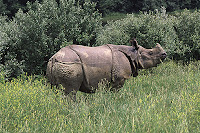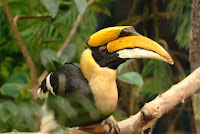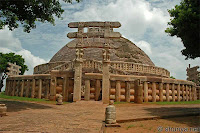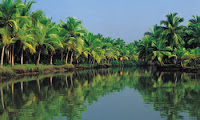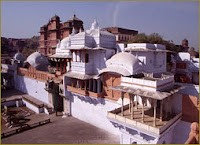 Waterfalls are one of nature most precious gifts and India is bestowed with several picturesque waterfalls. Apart from geological importance, the waterfalls have tourist important as well and attract large number of tourists.
Waterfalls are one of nature most precious gifts and India is bestowed with several picturesque waterfalls. Apart from geological importance, the waterfalls have tourist important as well and attract large number of tourists.Adyanpara Falls (Kerala ) : Adyanpara falls is set in the Kurmbalangod village of Nilambur Taluk in the state of Kerala. Kurmbalangod village is rich is wildlife and it attracts numerous variety of birds including the migratory birds. On your Kerala trip visit the Adyanpara Falls to enjoy picnic or some leisure time with your family members.
Chachai Waterfall : Situated on the banks of Bihad river in Chhattarpur District of Madhya Pradesh, this area is known for its picturesque surroundings and rare white tigers. Visit the area to have a look of beautiful water fall, falling in torrents from a height of 130 mts. 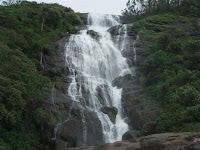
Chunchanakatte Falls : A beautiful fall, Chunchanakatte Falls is located on the bank of river Kaveri, close to the village of Chunchanakatte in Mysore District of Karnataka. Here the water falls from a height of 20 mts, and the peaceful and lush green surrounding will surely spell bind you.
Jog Falls : Karanataka’s Jog Falls is a unique creation of nature, and considered as the highest waterfall of Asia. Here the Sharavati river crashes about 900 ft downwards, forming four cascades popularly known as – king, queen, rocket and roarer. Set amidst the wild and unspoilt surroundings, the Jog Falls offers perfect environs for a leisure. During the rainy season when the river swells and the water gushes down, the entire area covers in mists and arching rainbows appears.
Dudhsagar Falls : Falling from a height of 600 mts, Dudhsagar Falls is one of the highest falls in India. Situated on the Karnataka-Goa border, it is an area of tropical forests criss-crossed with wonderful streams. The area near the Dudhsagar Falls is also dotted with shallow pools, where you can enjoy swimming. From the top of the waterfall you can also enjoy the breathtaking view of the surroundings.
Duduma Waterfall : Set in the heartland of Orissa, Dudma Waterfall is a jewell in the crown of the state. Flanked by quiet forest, the waterfall is a hidden wonder and deserves a visit.
Gersoppa Falls : One of the most beautiful falls of Karnataka, Gersoppa Falls protrudes out from Sharavati river. Here the river falls over a sharp cliff that divides into four cascades, the highest among them is 830 ft high. Far from the madness of the city, the waterfall provides you a welcome break.
Jonha Falls : Jonha Falls is located in Jharkhand, just 40 kms away from the state capital Ranchi. Set on the banks of the Kanchi river, Johna Falls is rich in wildlife. Apart from getting the spectacular view of the fall, you also get a chance to visit the nearby Gautam Buddha Temple. Due to its location close to the temple, the fall is also known as Gautam Dhara.
Kiliyur Falls : Kaliyur Falls are nestled in the Servarayan hill range of the Eastern Ghats in Tamil Nadu. Here you will get breathtaking views of waters falling from a height of 300 feet. Besides the view s of the lake and the valley will mesmerise you.
s of the lake and the valley will mesmerise you.
Kutralam Falls : Kutralam Falls is situated 160 kms away from Madurai city in Tamil Nadu. A major water body, Kutralam Falls comprises nine waterfalls namely the Peraruvi (Main Falls), Chitra Aruvi, Shenbaghadevi Falls, Then Aruvi (Honey Falls), Aintharuvi (Five Falls), Puli Aruvi(Tiger Falls), Pazhaya Courtrallam (Old Falls), Puthu Aruvi (New Falls)and Pazhathotta Aruvi (Fruit Garden Falls). Also known as the ‘Spa of the South’, Kutralam Falls is noted for its medicinal properties. A huge crowd of believers visit the falls for cure from ailments.
Muthyalamaduvu Falls : Popularly known as ‘Pearl Valley’, Muthyalamaduvu Falls is situated 45 kms south of Bangalore in Karnataka. A gushing stream, Muthyalamaduvu Falls cascading down from a height of 92 metre. It’s true that the drops of water strewn across the rock surface gives the appearance of scattered pearls. Set in the lush green valley amidst tranquil environment, the falls draw huge number of visitors.
Shivanasamudra Falls : Shivanasamudra Falls are located 85 kms east of Mysore. Here  the river Cauvery cascades down from a height of about 80 mts into a deep rocky gorge. Shivanasamudra Falls is a beautiful natural spot and you will really like its lush green surroundings.
the river Cauvery cascades down from a height of about 80 mts into a deep rocky gorge. Shivanasamudra Falls is a beautiful natural spot and you will really like its lush green surroundings.
Vazhachal Falls : A scenic waterfall, Vazhachal Fall is set on the edge of the Sholayar forest range in Kerala. In fact, the Vazhachal Fall is a part of the Chalakkudy river and its cool, misty waters offers a scintillating experience for visitors.
Other Popular Water Falls of India
Andhra Pradesh : Tada (Ubbalamdugu) Falls close to Chennai
Chhattisgarh : Chitrakot (100 ft), Teerathgarh Falls (300 ft)
Himachal Pradesh : Bundla Falls (328 ft), Palani Falls (492 ft)
Jharkhand : Dasam Falls (144 ft), Lodh Falls (468 ft), Hundru Falls (320 ft)
Karnataka : Barkana Falls (850 ft), Magod Falls (650 ft), Hebbe Falls (551 ft)
Kerala : Adyanpara Falls, Athirappilly Falls (80 ft), Meenmutty Falls (984 ft), Soochipara Falls (656 ft).
Madhya Pradesh : Gatha Falls (427 ft), Keoti Falls (427 ft), Rajat Prapat Falls (350 ft)
Maharashtra : Kune Falls (656 ft), Pandavgat Falls (350 ft)
Tamil Nadu : Kiliyur Falls (300 ft), Kutralam Falls (167 mts), Thalaiyar Falls (297 mts).


